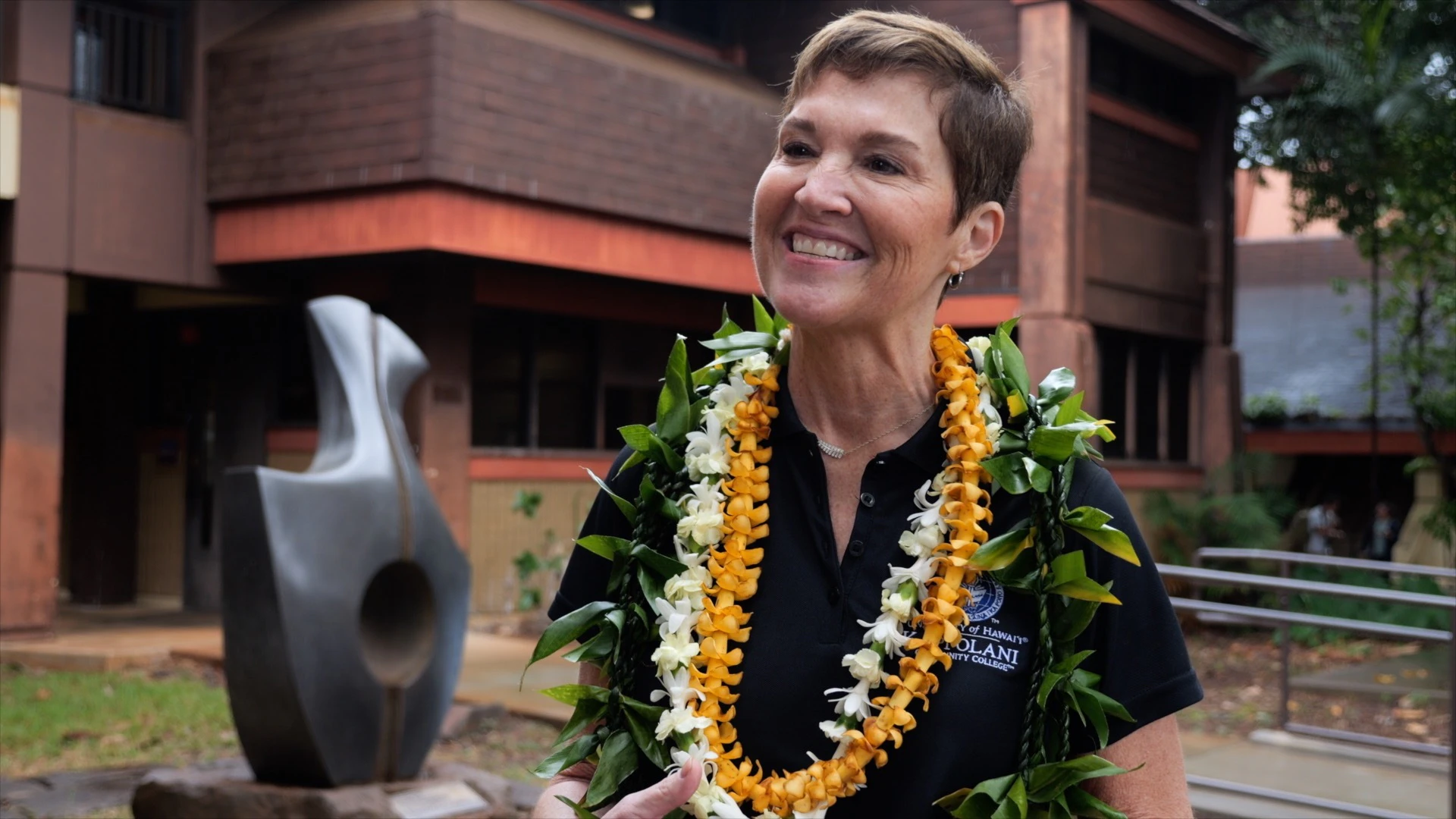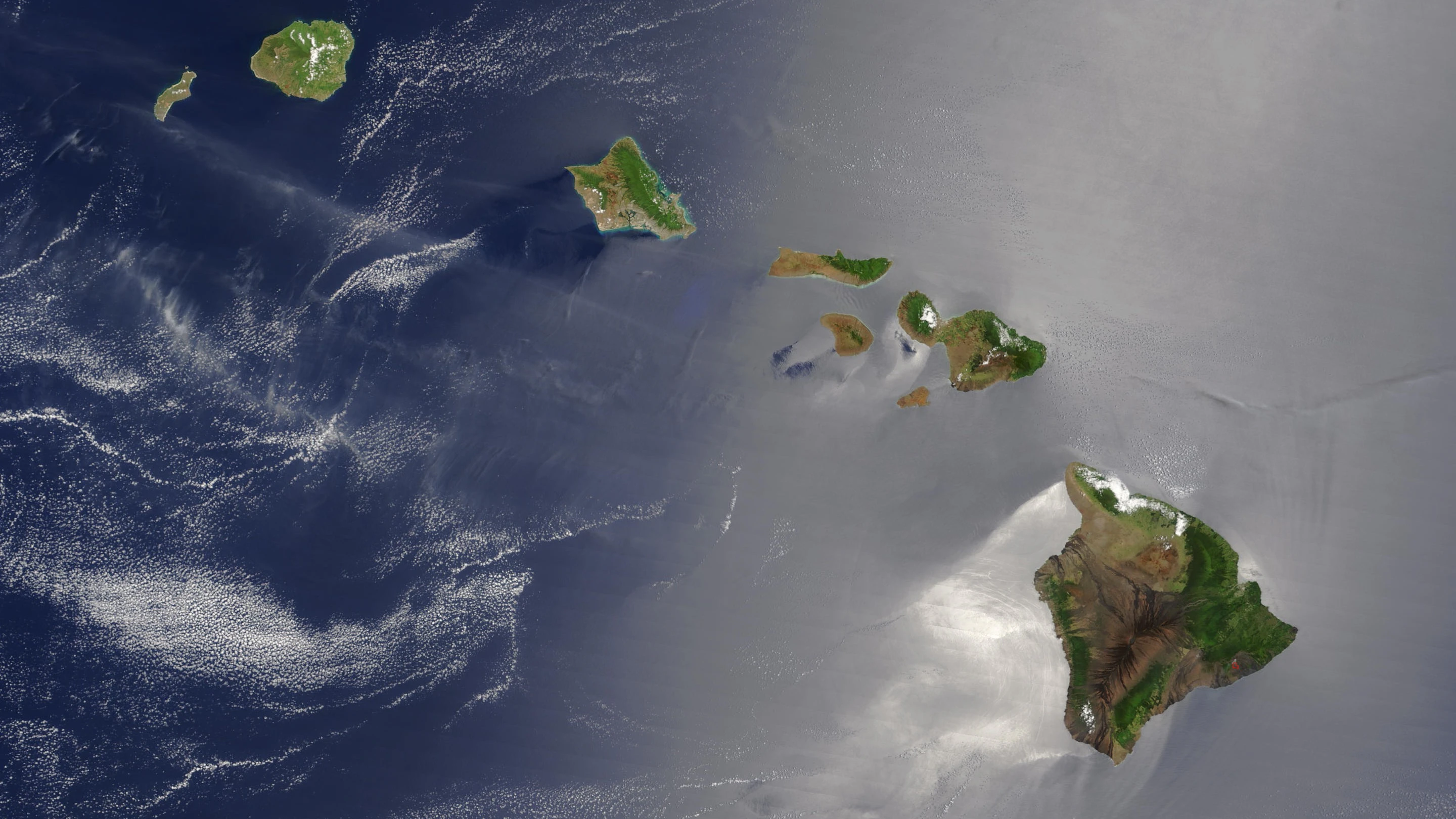University of Hawai‘i President Wendy Hensel has been on the job for a little more than a month.
Since stepping into the role on Jan. 1, she has started making visits to the university system's 10 campuses and six education centers — while recent federal policy changes being implemented on the national level will have an impact higher education across the country.
Prior to joining UH, Hensel served as executive vice chancellor and university provost at the City University of New York, a 25-campus system, which has about 240,000 undergraduate and graduate students, according to its website.
The UH Board of Regents tapped Hensel — who was selected from 93 applicants — for the role in October. She replaces former UH President David Lassner who had held the top spot for more than a decade and retired at the end of 2024.
Hensel, a graduate of Harvard Law, says she is a labor and employment lawyer by training. She practiced law for a few years before getting pregnant with her daughter and deciding to "take a side step and think about what I wanted to do."
“There was a posting for a non-tenure track legal writing position at Georgia State University College of Law,” she told Aloha State Daily on Friday. “Long story short, just fell in love with teaching and with students, especially first-generation, underprivileged students, and being able to help them reach their life goals. Really, from there, education became my passion.”
She entered the higher education arena in 1999.
Hensel says administration is a different way to have a “higher impact, by really being able to shape the policies that prevent students from succeeding.”
In addition to her work at CUNY, Hensel also served in various leadership roles at Georgia State University in Atlanta, including provost and senior vice president of academic affairs, and dean of the College of Law .
But Hensel, who has been visiting the Islands for at least 15 years, says she's been "in love with Hawai‘i for a long time."
About three years ago, she and her husband bought a townhouse on Hawai‘i Island’s Kohala Coast “because we really wanted to begin to put down roots in the community.”
According to the university when her appointment was announced, Hensel was hired for a three-year term, with up to a two-year extension, subject to approval by the Board of Regents.
As part of her hiring, she will receive a $675,000 annual salary, a housing allowance of $7,000 per month, up to $60,000 for moving expenses, and a tenure fallback position in the UH Mānoa William S. Richardson School of Law.
She and her husband, Kenton Dudley, have four adult children.
Here are some highlights from her conversation with ASD:
How has the first month on the job been?
It’s been wonderful — and intense and exciting and challenging, all at the same time. Any time coming in from outside the community, the need to really listen to people and learn the culture and the ideas and perspectives is a critical piece, so that’s what I’ve prioritized. I’m in the middle of a 10-campus tour and six workforce centers, which have been really fantastic for getting to know the ‘ohana, the ‘āina, and sort of the opportunities and challenges that people in our community are facing. The federal executive orders, the EOs have had sort of thrown a wrench unexpectedly into that process. That makes it a little more challenging, but it’s all been very exciting.
Stepping into this role, what is your top priority?
It’s definitely listening to people and understanding what’s important to them in our community. I can’t represent and champion the community if I don’t understand who the people are and what’s important to them. So that’s been incredibly worthwhile. I’ve been out there considerably — not just on the campus, but also out in the community, both on O‘ahu and the neighboring islands. It’s just great to start to put down deep roots with people that will, I think, serve as the foundation for trust as we begin to make decisions going forward.
What are you most excited about in this position?
I think we start from a position of strength and the question is ‘How far can we go?’ It’s a moment of incredible change for higher education, even before the change in administration, and there are tremendous transformative opportunities out there for us to really take the university to the next level. I’m really excited about that and to see what we can do together because we’re so integrated into the community. We touch everybody. So that’s great news for the entire state of Hawai‘i.
How has your past experience prepared you for this moment in time and leadership?
All of those experiences collectively have done that. I think working through the challenges of Covid in a red state, and balancing [U.S. Centers for Disease Control and Prevention] directives with the desire to keep the campus open and work through the legislative desires that sometimes were in conflict with public health information helps navigate uncharted waters, if you will.
The way I put it to many of my team is you learn not to ride a roller coaster. You can’t have a good day when things are going your way and a bad day when some new bad news comes out. You have to provide steady leadership that continues to look at both the short- and long-term at the same time, and just keep moving forward, no matter the challenges in front of you.
… My dad taught me every day can’t be the Super Bowl. If that’s how you operate, you will burn and flame out really quickly. I think that measured way of both appreciating the gravity of the moment but also continuing to contextualize it and balance against the forward strategic work that we’re doing at the same time is really, really important.
How do you draw from your experience at CUNY when coming to a 10-campus system located across different islands?
You can't find a more diverse place than New York City. It sounds like it's in a single place, but the cultures that are represented within that body are some of the most diverse in the world, and each campus had somewhere around 140 different nations represented. So it's more similar than you would think.
Also, one similarity that I found to be really helpful — 80% of students in New York City Public Schools matriculate to the City University of New York. The opportunities to collaborate there, from pre-K to higher education, are replicated here in the P-20 projects that we're doing. So there are a lot of lessons I can take from what we've done there to here. It's been really very helpful.
What do you think is UH’s role in the community?
I think we play a unique role in that we are the community. We are not to the side of it. We are integrated in every aspect of the work that’s being done and the people sitting across our cities, towns and places of work. We are an anchor institution in all of the places that we sit. It’s not just the provision of education but the strategy of workforce development, resource provision. ... [Universities are] always important, but I think we’re foundational here in Hawai‘i in ways that are really exciting and meaningful.
Stephanie Salmons can be reached at stephanie@alohastatedaily.com.





